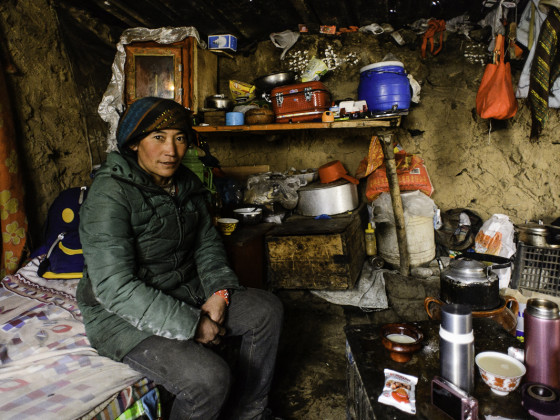One of the most intimidating things when we travel is taking pictures of people we don’t really know. Even if that stranger is fascinating to us, perhaps we feel embarrassed to approach him or her and ask for a pic. We have two options: we can “steal” a shot, or we can get ourselves together and ask for permission to take a portrait. Every time, choose the second option. Some people like to hide behind the zoom, but I strongly recommend avoiding that.
By following these steps, you’ll go back home with not only portraits of locals but also a more holistic experience after your photographic journey.

One important thing will open doors for you when taking pictures of people: a big smile. The more sincere, the better.
Be kind and smile. Often when we travel, language is a barrier to starting conversations, but smiling is universal. Every time you can, ask for permission for a portrait. Making eye contact and pointing at your camera tends to be enough to indicate you want to take a picture. You might find it hard to believe, but most people will agree to being photographed. Always be respectful of those who don't wish to be captured in your shots.
*Saleswoman at Inle Lake market, Myanmar.
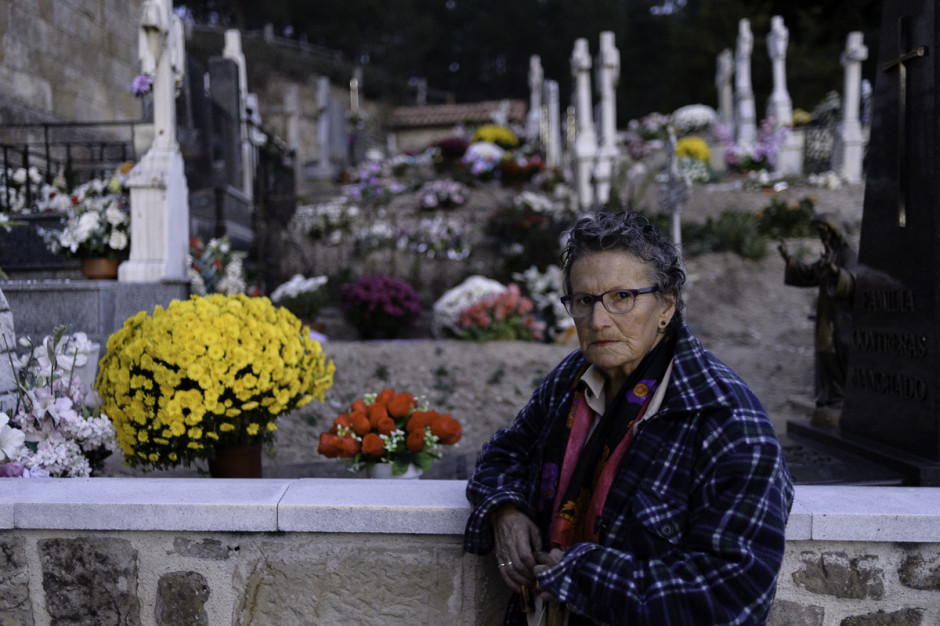
Practice before you travel.
The best way to “train” ourselves for taking pictures of strangers when traveling is practicing before we even hit the road. Photograph friends and relatives you don’t find intimidating. Practicing with them will help you when you approach people you don’t know asking for a pic.
*Portrait of my aunt in Rabanera del Pinar Cemetery, Burgos, Spain.
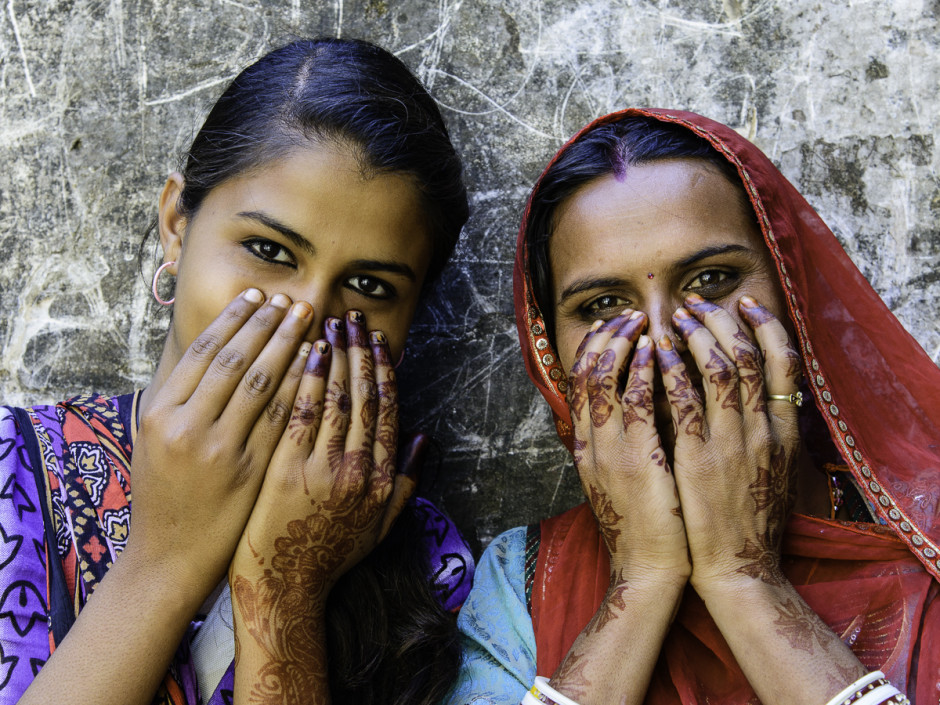
Interact with people.
It'll not only help people open up and result in better pictures, but will also teach you more about the places you visit, make you new friends, and enrich your experience. Those interactions and the cultural exchange are among the most fascinating experiences traveling has to offer.
*Chittorgarh girls visiting the city’s fort, Rajasthan.
Intermission
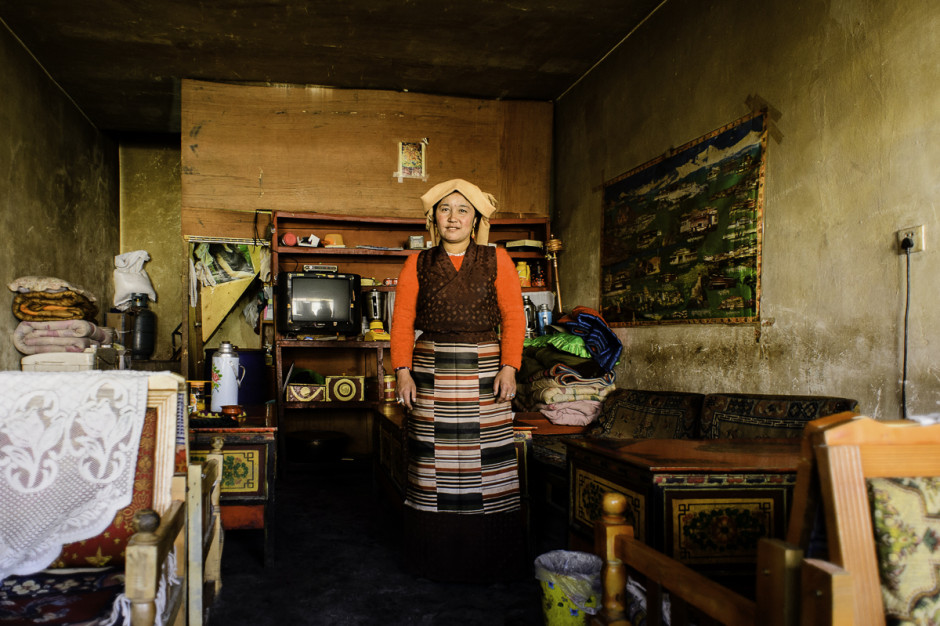
Photograph people wherever they feel most at ease, in their natural element.
*Teahouse owner in Tibet.
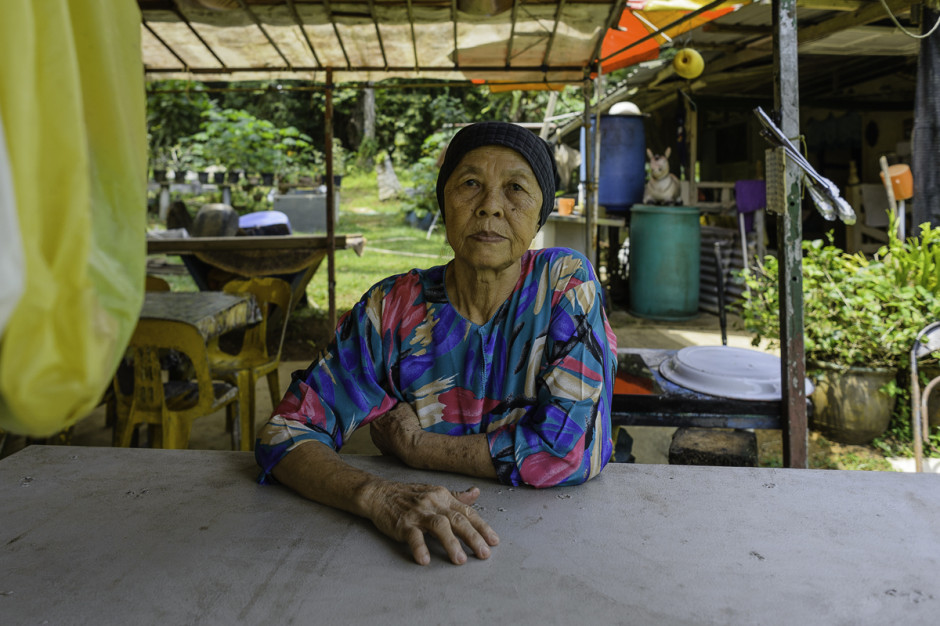
To loosen up, you can always go to the street markets.
Most places we visit have street markets and fairs. Buy something, start a conversation, and you'll easily get a portrait of the shopkeeper.
*Waitress on Pulau Ubin Island, Singapore.
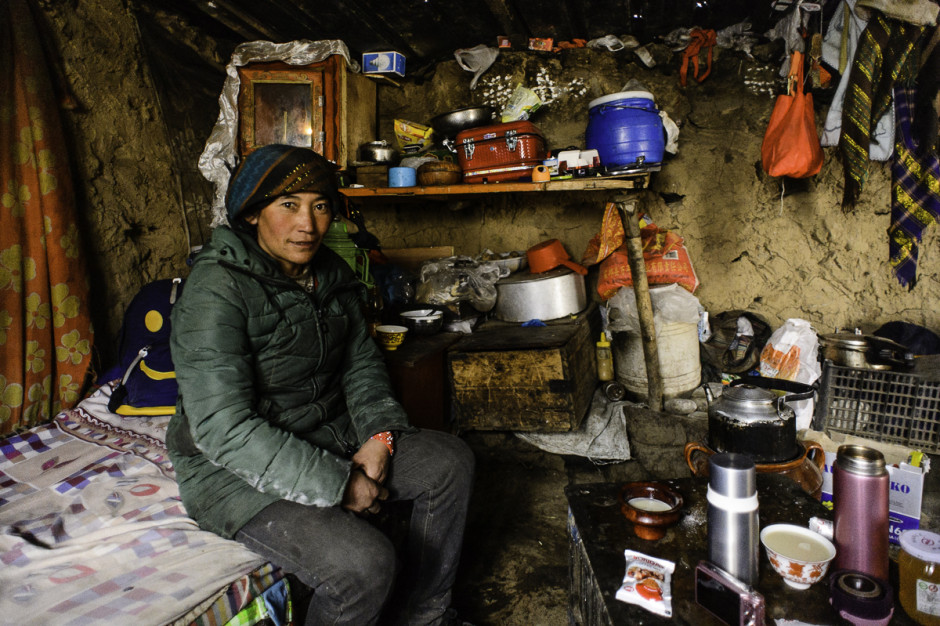
If you haven’t yet, drop the zoom.
I know it's hard to get rid of the zoom, considering how easy it is to manage. But trust me, once you change the zoom for a prime lens (fixed focal length), you don’t go back. Prime lenses are affordable, clear, and luminous, so they allow us to make portraits with less light in interior settings. Plus, the fixed focal length can be less intimidating for our subjects than a large zoom.
*Nomad in Tibet, inside her winter shelter.
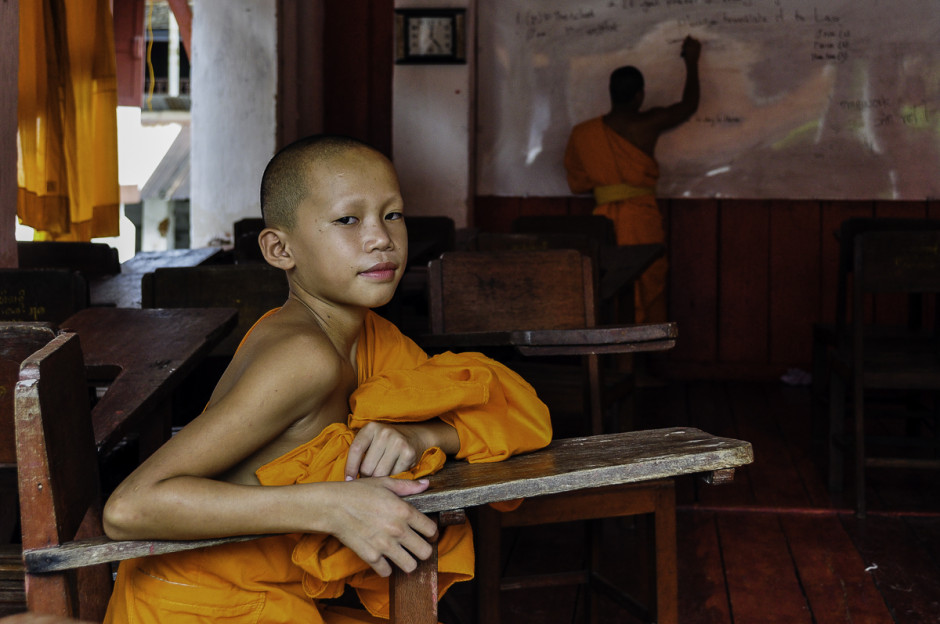
Take more than one picture.
The person we want to capture with our camera will probably be stiff during the first shoots, so don’t hesitate to take several pictures. You might find that the best one is the last one. Once you say goodbye, you can also ask for one last pic. That's usually when people are most relaxed because they've gotten to know us after spending time together.
*Novice in a monastery English classroom in Luang Prabang, Laos.
Intermission
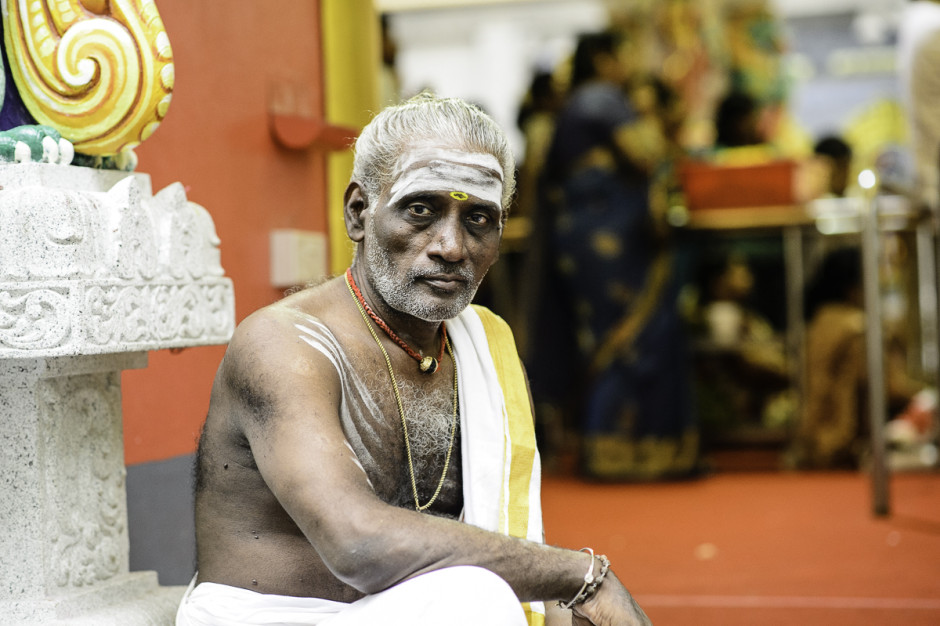
Stage your portrait so the background highlights your subject.
A poor background choice can damage what could have been a great picture if only we'd moved the person a couple of meters...
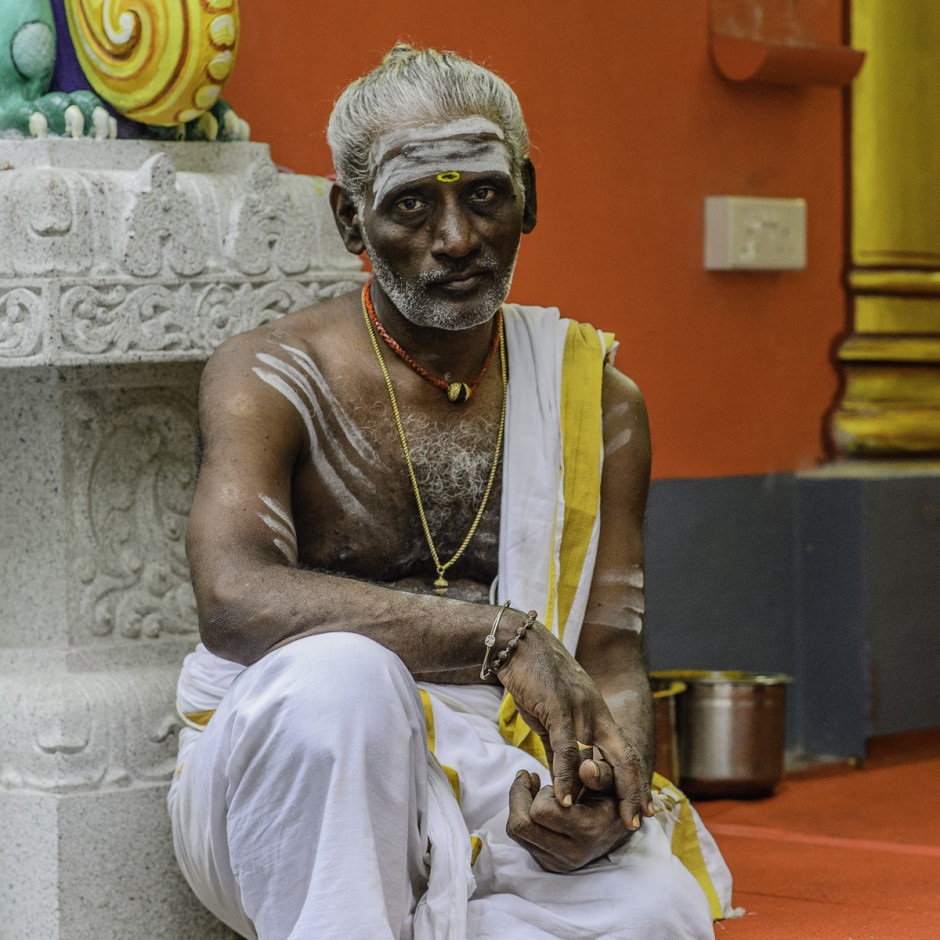
Don’t be afraid of asking the person to move here or there, always saying “please” and explaining the reason. A good background will improve the image by providing a storytelling setting.
*Priest at a Hindu temple, Singapore.
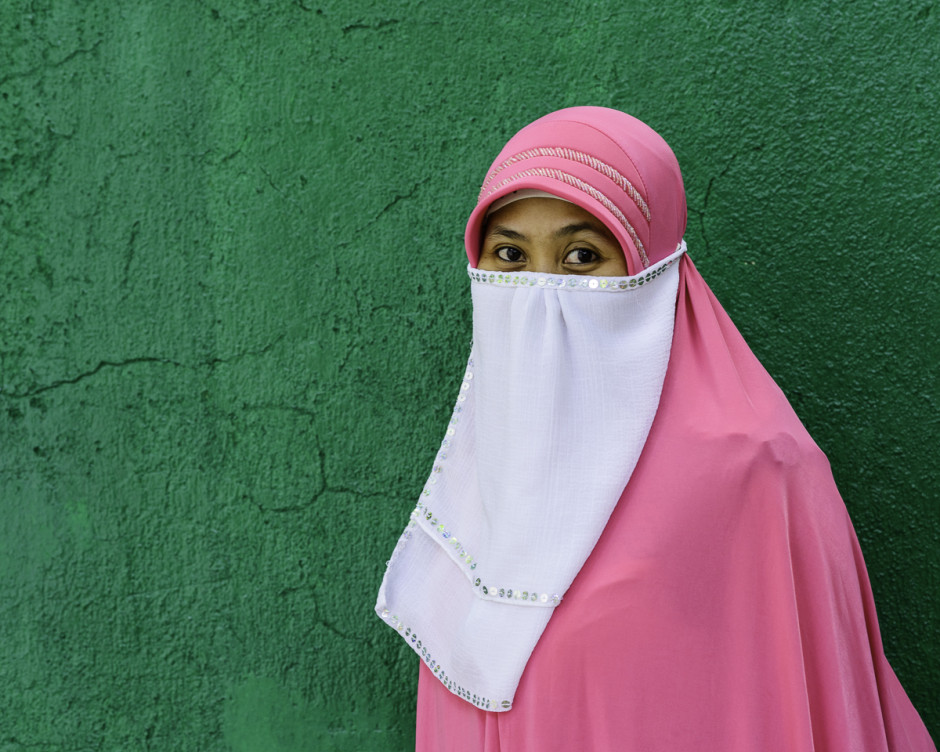
Get used to lights and shadows.
We often read that early morning or right before sunset are the best time of day for pictures. But when we travel, that's a luxury we might not be able to afford. You can take great portraits at different hours. Look for shade or for interior settings, where the light is softer and people can pose comfortably, with relaxed facial expressions.
*Woman wearing a veil in Macau Mosque.

Go to festivals and shows where you can take shots of local artists.
If you have the opportunity to talk to them, it'll be easy to photograph artists because they tend to be more at ease with cameras, and they won’t mind posing for you. In the middle of the street or in private venues, wherever you go you'll find a good number of shows. Enjoy them.
*Artist in the Chinese Opera Teahouse, Singapore.
Intermission
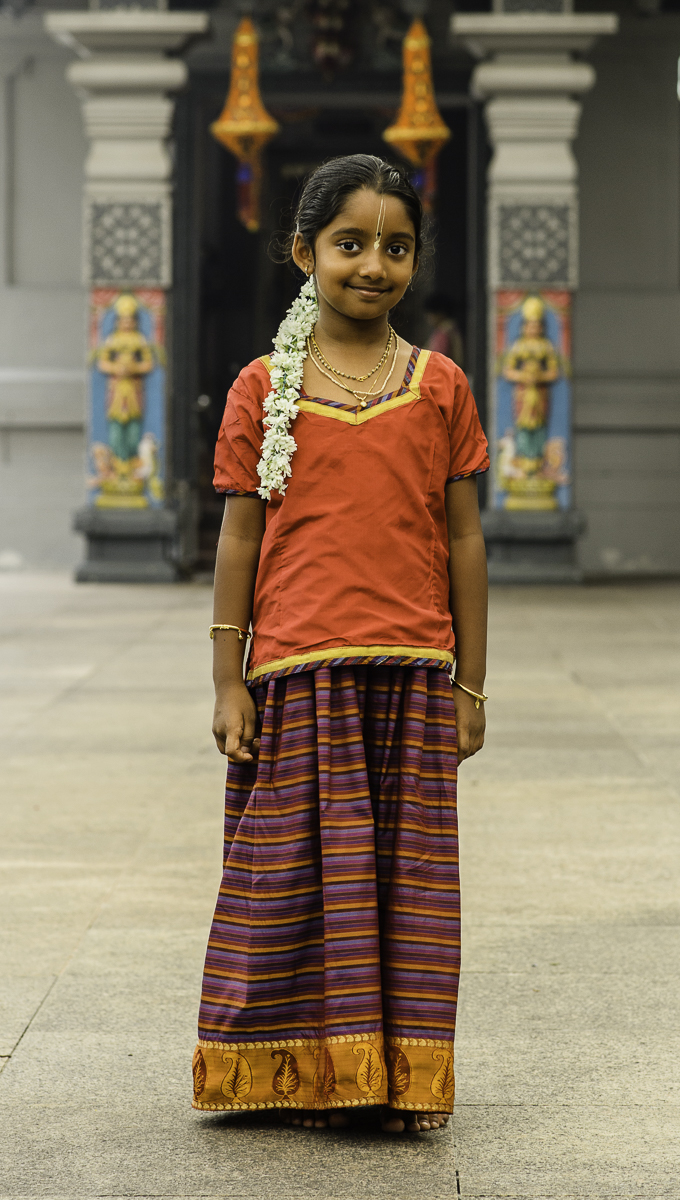
Taking pictures of children only requires one extra step.
It's better to ask for parents’ permission, wherever you go, if you wish to photograph a child. More often than not, they'll be thrilled with the idea. Be careful with this issue because, depending on the country, you might get into serious problems if you take a pic of a kid without permission.
*Girl at a Hindu temple, Singapore.
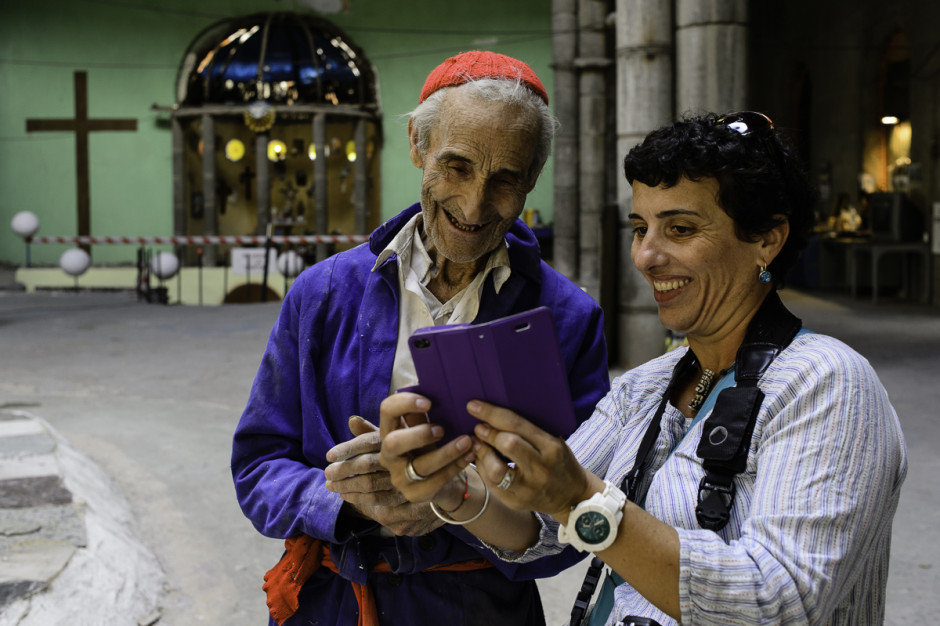
Share the pictures you just took with your subjects.
They'll be delighted to see how great they look in your camera.
*Mr. Justo, who was working in the cathedral, checking out a picture in the camera of a visitor.
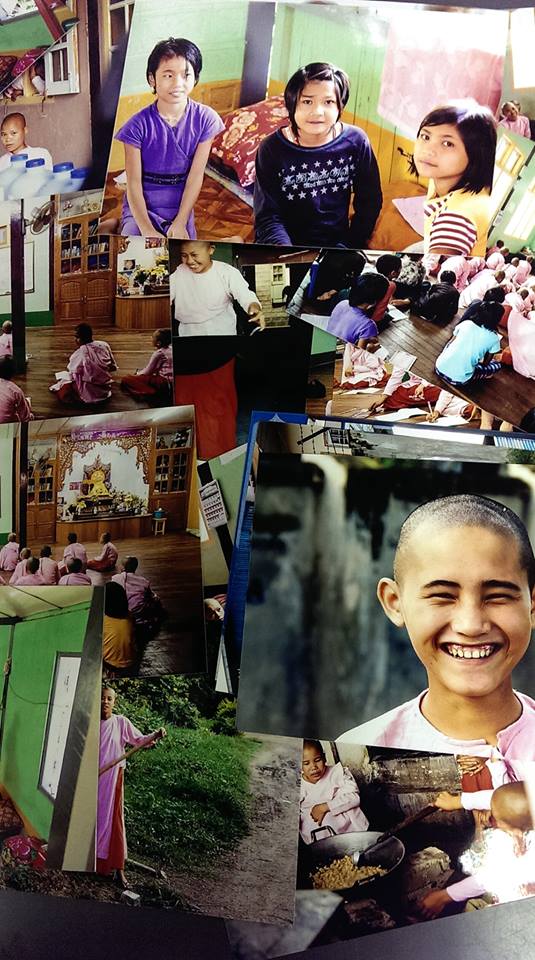
If possible, send the edited pictures to people you photographed.
Ask for emails and addresses of those strangers you connected with. When you go back home, send the final pic via email or a printed copy via airmail. They'll be thankful and happy to see it. Now every time you make a promise like this, do your best to keep it, or they'll feel a lot more disappointed than with a poor-quality image.
*Printed pictures I sent to Myanmar after my trip was over.
